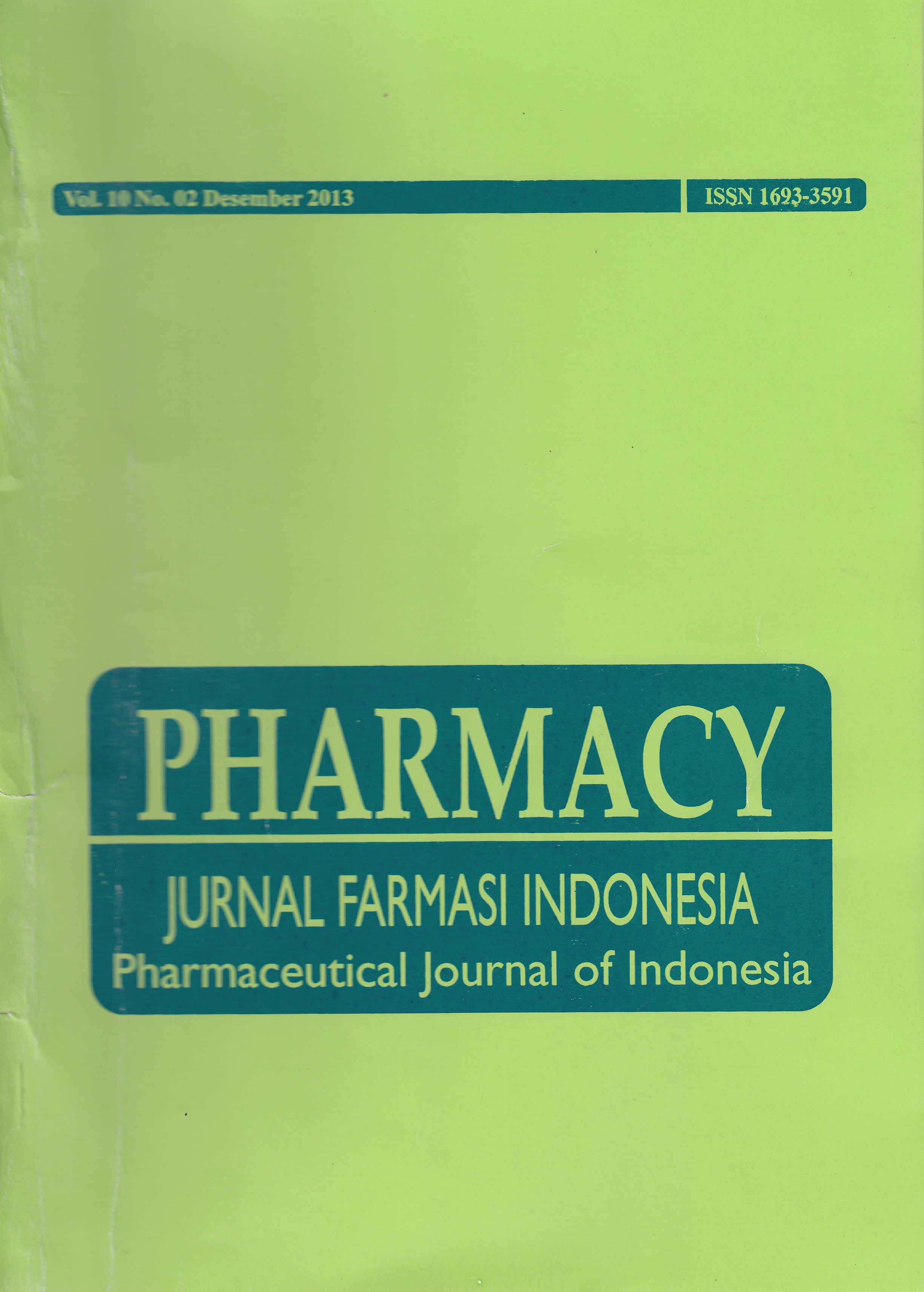EVALUASI KEPATUHAN DAN RESPON MUAL MUNTAH PENGGUNAAN ANTIEMETIK PADA PASIEN KANKER PAYUDARA YANG MENJALANI KEMOTERAPI DI RSUD PROF. DR. MARGONO SOEKARJO
DOI:
https://doi.org/10.30595/pji.v10i2.797Abstract
ABSTRAK Kanker payudara merupakan salah satu kanker dengan insidensi terbanyak, terutama pada wanita. Perkembangan terapi banyak dilakukan untuk meningkatkan survival dan prognosis pasien kanker payudara. Variasi pilihan terapi kanker payudara diberikan dengan mempertimbangkan banyak faktor, meliputi usia, status menopausal, komorbid, stadium kanker, faktor biologis dan riwayat kemoterapi. Optimasi kualitas hidup selama terapi merupakan hal yang sangat penting. Chemotherapy Induced Nausea Vomitting (CINV) merupakan efek samping yang sering terjadi dan dapat mempengaruhi kualitas hidup pasien kanker yang melakukan kemoterapi. Penelitian ini bertujuan untuk Mengetahui respon mual muntah, kepatuhan pasien terhadap obat anti mual muntah yang diberikan dan hubungan antara kepatuhan penggunaan anti mual muntah dan respon mual muntah pasien kanker payudara di RSUD Prof. Dr. Margono Soekarjo terhadap obat anti mual muntah. Penelitian ini merupakan penelitian observasional yang dilakukan dengan rancangan studi deskriptif dan analitik melalui penelusuran data secara prospektif terhadap pasien kanker payudara di RSUD Prof. Dr. Margono Soekardjo. Hasil penelitian yang diperoleh menunjukkan bahwa Respon mual muntah merupakan respon terbanyak yang ditimbulkan oleh pemberian agen kemoterapi baik pada fase acute emesis (80%) dan delayed emesis (90%). Sebanyak 79% pasien patuh terhadap regimen antiemetik yang diberikan. Tidak ada hubungan antara kepatuhan penggunaan antiemetik dan respon mual muntah pada pasien kanker payudara di RSUD Prof. Dr. Margono Soekarjo. Kata kunci: kanker payudara, CINV, respon mual muntah, kepatuhan. ABSTRACT Breast cancer is one of the cancers with the highest incidence, especially in women. The development of therapy has been implemented to improve the survival and prognosis of breast cancer patients. Breast cancer treatment is given by considering many factors, including age, menopausal status, comorbidities, stage of cancer, biological factors and history of chemotherapy. Optimization of quality of life during treatment is very important. Chemotherapy Induced Nausea vomitting (CINV) is a common side effect and can affect the quality of life of cancer patients. The aims of this study are to know response of nausea vomitting, patients adherence, relationship between adherence and response of nausea vomitting. This study is an observational study conducted by descriptive and analytic study design in Prof. Dr. Margono Soekarjo hospital. The results of this study are the nausea and vomitting response are the most in the acute emesis phase (80%) and delayed emesis (90%). A total of 79% were adherent to antiemetics therapy. There is no relationship between adherence and the response of nausea vomitting in Prof. Dr. Margono Soekarjo hospital. Key words: breast cancer, chemotherapy induced nausea and vomitting, antiemetics response, adherence.References
Booth, C.M., et al, Clemons, M., Dranitsaris, G., Joy, A., Young, S., Callaghan, W., Trudeau, M. dan Petrella, T., 2007. Chemotherapy-induced nausea and vomiting in breast cancer patients: a prospective observational study. The Journal of Supportive Oncology, 5:374–380.
Chan, A., Low, X.H., Yap, K.Y., 2012. Assessment of the relationship between adherence with antiemetic drug therapy an control of nausea and vomitting in breast cancer patients receiving anthracycline-based chemotherapy. Journal of Managed Care Pharmacy, 18: 385-394.
Chan, V.T. dan Yeo, W., 2011. Antiemetic therapy options for chemotherapy-induced nausea and vomitting in breast cancer patient. Breast Cancer: Targets and Therapy, 3:151-160.
Grunberg, S.M., 2004. Chemotherapy-induced nausea and vomitting: prevention, detection and treatment-how are we doing? The Journal of Supportive Oncology, 2:1-12.
Hesketh, P.J., 2008. Drug therapy chemotherapy-induced nausea and vomitting, New England. Journal Medicine, 358:2482-2494.
Jordan, K., Sippel, C., Schmoll, H.J., 2007. Guidelines for antiemetic treatment of chemotherapy induced nausea and vomitting: past, present and future recommendations. The Oncologist, 12:1143-1150.
Lindley, C.M., Hirsch, J.D., O’Neill, C.V., Transeu, M.C., Gilbert, C.S. dan Osterhaus, J.T., 1992. Quality of life consequences of chemotherapy-induced emesis. Quality of Life Research, 1:331-340.
National Comprehensive Cancer Network, 2012. NCCN clinical practice guidelines in oncology antiemesis, Version 1.
Turnheim, K., 2003. When drug therapy gets old: pharmacokinetics and pharmacodynamics in the elderly. Experimental Gerontology, 38:843–853.
Valle, A.E., Wisniewski, T., Vadillo, J.I., Burke, T.A., Corona, R.M., 2006. Incidence of chemotherapy induced nausea and vomitting in mexico healthcare provider predictions versus observed. Current Medical Research and Opinion, 22:2403-2410.
World Health Organization, 2003. Adherence to long term therapy : Evidence for Action. Switzerland: WHO.
Downloads
Published
How to Cite
Issue
Section
License
Authors who publish with this journal agree to the following terms:
- Authors retain copyright and grant the journal right of first publication with the work simultaneously licensed under a Creative Commons Attribution 4.0 International License that allows others to share the work with an acknowledgement of the work's authorship and initial publication in this journal.
- Authors are able to enter into separate, additional contractual arrangements for the non-exclusive distribution of the journal's published version of the work (e.g., post it to an institutional repository or publish it in a book), with an acknowledgement of its initial publication in this journal.
- Authors are permitted and encouraged to post their work online (e.g., in institutional repositories or on their website) prior to and during the submission process, as it can lead to productive exchanges, as well as earlier and greater citation of published work (See The Effect of Open Access).






